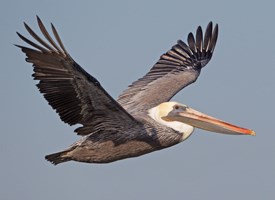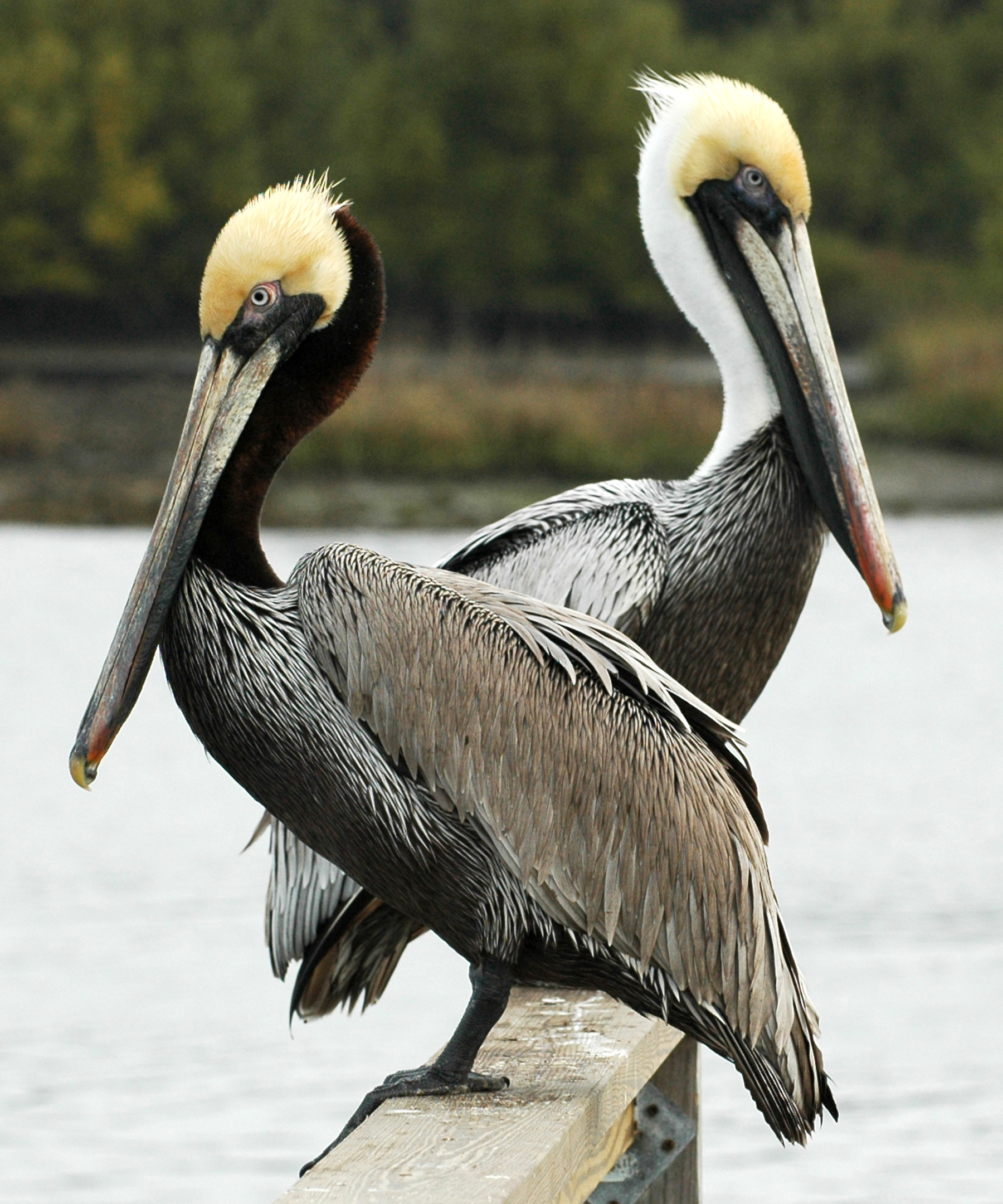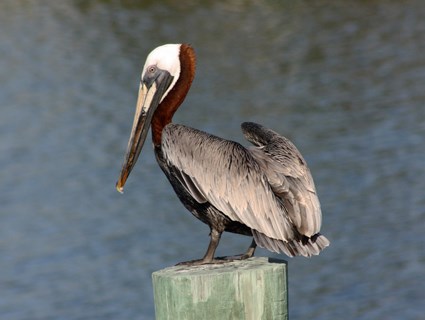
Pelecanus occidentalis
TAXONOMY
Pelecanus occidentalis Linnaeus, 1766, Jamaica. Six subspecies
recognized.
OTHER COMMON NAMES
French: Pйlican brun; German: Brauner Pelikan, Braunpelikan;
Spanish: Peнlcano Alcatraz.
PHYSICAL CHARACTERISTICS
40–60 in (102–152 cm); 6–22 lb (2.7–10 kg); male larger than
female. These are the only dark-colored pelicans. Nonbreeding
adults have white or yellowish head and neck and grayish
brown bodies. Breeding birds have dark hindneck and a yellow
patch on foreneck.
DISTRIBUTION
P. o. occidentalis: West Indies; P. o. carolinensis: Maryland, USA
to northern Brazil; P. o. californicus: Oregon, USA to Panama;
P. o. murphyi: Colombia to northern Peru; P. o. urinator: Galбpagos;
P. o. thagus: Peru to central Chile.
HABITAT
Seacoasts and estuaries.
BEHAVIOR
Head swaying, head turning, and bowing are among the pair
bonding displays that precede breeding. Frequently roosts in
trees and on manmade structures.
FEEDING ECOLOGY AND DIET
Plunge-dives from as high as 65 ft (20 m) in the air to apprehend
various marine fish.
REPRODUCTIVE BIOLOGY
Breeds throughout the year; only in spring in northernmost
part of range. Usually constructs nest of sticks in trees. Typically
lays three eggs that are incubated for four weeks. Young
fledge at 9–11 weeks.
CONSERVATION STATUS
Once Endangered, this species is no longer listed thanks
largely to the elimination of harmful pesticides in North
America.
SIGNIFICANCE TO HUMANS
One of three main guano birds of western South America.
Among pelicans, one of the most tolerant of human activities.
Frequently injured by abandoned fishing tackle.
Other popular Animals
Photo Gallery of - Brown pelican




 Animalia Life
Animalia Life